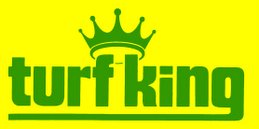USING BORAX TO CONTROL CREEPING CHARLIE
Borax (sodium tetraborate, a white, crystalline mineral salt) has been found to be an effective herbicide for creeping charlie (Glechoma hederacea, also known as ground ivy, creeping jenny and gill-over-the-ground). Creeping charlie is an invasive perennial weed that vines throughout lawns and chokes out grass. Since the 1920s, borax detergent has been used as an herbicide to eradicate weeds, but it has only recently been tested scientifically for effectiveness on creeping charlie.
Borax contains boron which is an essential micronutrient that aids in sugar transportation in plants. However, in minute excess amounts, boron has a toxic effect on creeping charlie.
Borax must be applied with great caution because boron remains immobile in the soil and can accumulate to form a "hot spot" in the lawn. Boron toxicity results in yellow and brown spots around edges of leaves. Stems wilt and eventually the weed dies. Established grass appears to withstand the minute excess of boron needed to kill creeping charlie, though it may show brown discoloration temporarily. If the borax solution is applied in too high a concentration, or repeatedly, it will then be toxic to grass and many other plants.
This treatment can be applied only once each year for two years. If you still have creeping charlie problems, then switch to a standard herbicide.
Before applying borax as a herbicide be sure to test your spraying technique and the rate at which liquid sprays from the nozzle. Fill the sprayer with water and walk at a constant pace, passing back and forth over an area the same size as the one to be sprayed with borax. Your goal is to walk fast enough to empty the sprayer tank, spreading its contents evenly over the entire area.
Borax Solution for Creeping Charlie Control:
Dissolve 10 oz. Twenty Mule Team Borax in 4 oz. (½ cup) warm water.Dilute in 2.5 gallons of water.
This will cover 1,000 square feet. If you have a smaller area to treat, cut the "recipe" accordingly.
Apply borax when creeping charlie is actively growing in the spring, when no rain is expected for 48 hours. The borax treatment appears to be most effective during warm summers when soil moisture is ample.
Remember: The borax recipe has been tested only on creeping charlie and is not to be used on other broadleaf weeds. Be sure to use the borax spray only in the lawn because research shows established grass is tolerant of the spray. It should not be used in gardens.
If creeping charlie is growing in a very shady location, think about what you can replace it with before spraying this borax treatment. Unless you can establish other plants you'll find the creeping charlie sprouting again in the same location.
A healthy lawn is the strongest defense against weeds. Maintaining a regime of proper mowing practices, watering and fertilization will enable any gardener to combat weeds in a lawn. Contact your local County Extension Office or call The Yard and Garden Line for information on lawn maintenance and fertilization.
From http://www.extension.umn.edu/yardandgarden/ygbriefs/h519borax.html


2 comments:
Wah. I don't want to use borax.
Three years ago my husband and I tilled up a weed forsaken backyard and seeded. For two years following, wwe have battled the creeping jenny which grows in massive proportions, along side the grass. Noone told us that the chopped bits would also result in spreading it. Weed kill applications have been required on a monthly basis. This is terrible, since weed kill agents seep into ground water and taint it, kill fish and cause problems with our worlds water supply. They also send the jenny shoots to seed and the jenny simply gets reseeded into the lawn. Plus creeping jenny roots are runners, sometimes 10 or 20 ft long, and several feet deep [our neighbor dug one up and saved it, it was so big]. This borax treatment may be exactly what is required to reduce the creeping jenny overgrowth, altho I suspect I will be hand weeding as well, for some time to come. Thank you.
Post a Comment